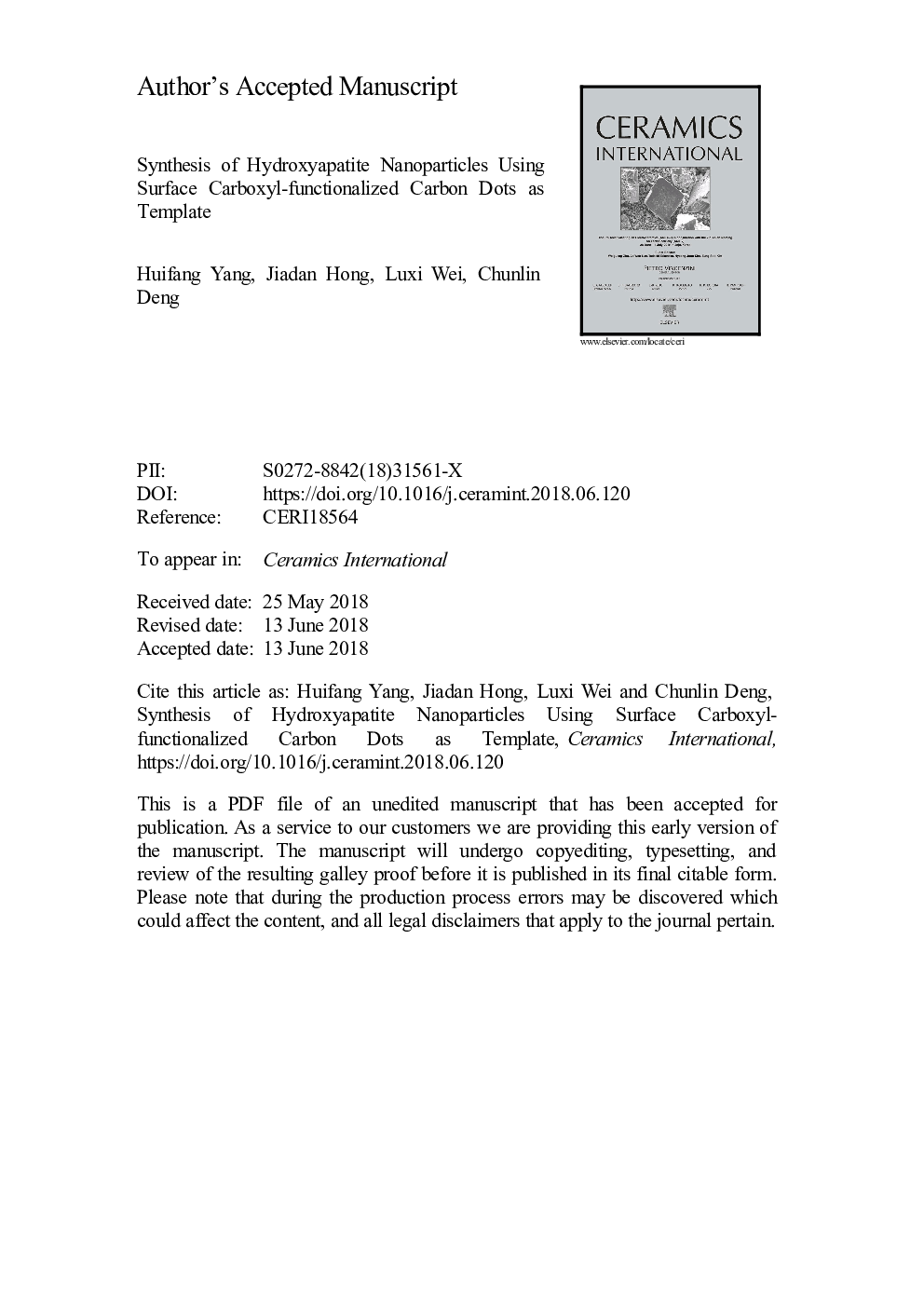| Article ID | Journal | Published Year | Pages | File Type |
|---|---|---|---|---|
| 7886182 | Ceramics International | 2018 | 29 Pages |
Abstract
Carbon dots (CDs), which are discrete, nearly spherical nanoparticles with sizes below 10â¯nm and large amounts of carboxylic acid moieties on the surface, have been proposed as an ideal template candidate for heterogeneous nucleators to regulate hydroxyapatite (HAp) nucleation and growth. In this paper, small HAp nanoparticles formed on carboxyl-functionalized CDs in situ were fabricated via the hydrothermal method. Investigation for the corresponding morphologies and detailed formation mechanisms of samples were conducted by Fourier transform infrared spectroscopy (FTIR), X-ray photoelectron spectroscopy (XPS), transmission electron microscopy (TEM), high-resolution transmission electron microscopy (HR-TEM) and Rietveld refinement. The optimum size and crystallinity of HAp particle had been obtained in the preparation when the additive content of CDs was 1.11â¯g/L. Moreover, results also suggested that CDs were served as nucleators in the HAp particles. Therefore, a novel synthetic strategy is presented for small HAp nanoparticles using CDs as template.
Keywords
Related Topics
Physical Sciences and Engineering
Materials Science
Ceramics and Composites
Authors
Huifang Yang, Jiadan Hong, Luxi Wei, Chunlin Deng,
